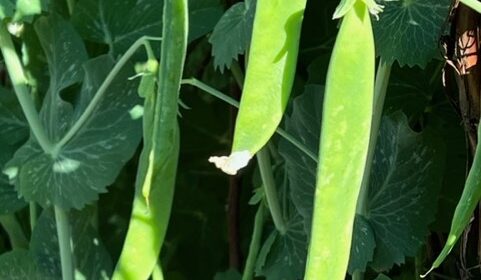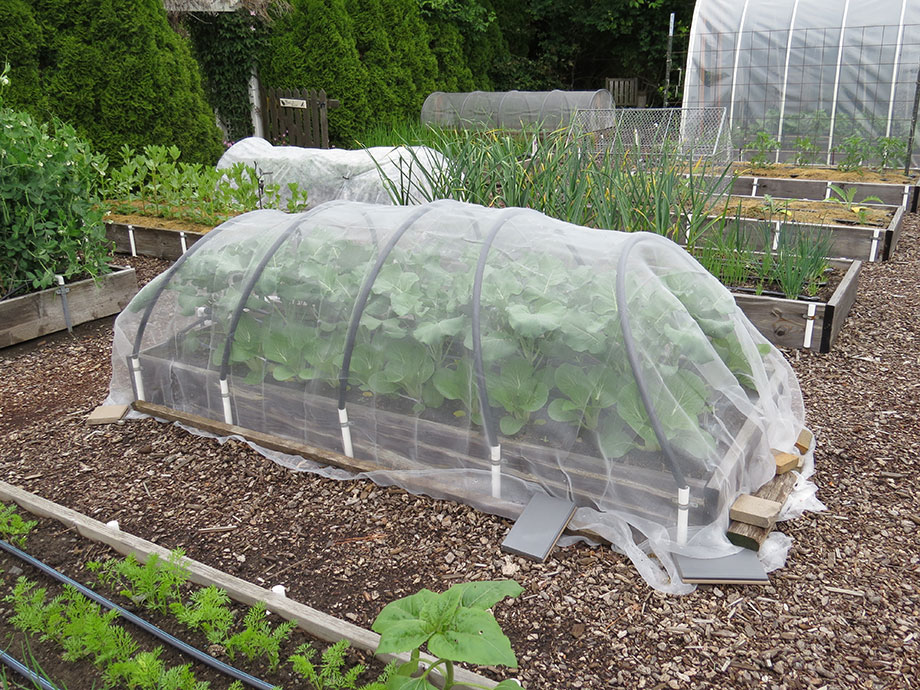June 26 Column: Vegetable Garden Update


For this week’s garden column and video, I have given an update on how our vegetable garden is doing. As you know, this has been an extremely challenging spring due to the extended period of cold, wet weather. You can read my column in today’s edition of The Spokesman-Review: Vegetables getting a slow start, thanks to cool, rainy spring. Or you can read the text of my column underneath the video below.
We’re currently experiencing a bit of “weather whiplash” because we’ve gone from chilly temperatures to highs in the 80s! I’m even seeing that we might get up to 90 degrees on Tuesday. Fortunately, our veggie plants are loving the warmer temperatures – and the break in the rain – so they are growing by leaps and bounds.
I have to admit that seeing the potential for 90 degrees is making me a bit nervous. Last year at this time, we were dealing with an extended heat wave. Both the garden and this gardener suffered through it miserably! Let’s hope things stabilize a bit.
Here’s my column:
by Susan Mulvihill
The cold, wet weather we experienced this spring was not what I was expecting after last year’s awful heat wave. While the flowers in my garden have been spectacular due to all of the rain, my vegetable plants have been struggling. You’d think they would thrive with so much moisture but sometimes there can be too much of a good thing.
You might recall that I vowed earlier this year to plant my warm-season crops later than usual, to avoid any surprise cold snaps. I’m happy to report that I waited until the end of May but, to be honest, it wasn’t due to newfound patience on my part. It was the weather that forced me wait that long.
The lettuce, pak choi, Swiss chard, carrots, beets, radishes, turnips and potatoes have been growing beautifully. My Green Arrow shelling peas got off to a sluggish start – probably due to that surprise snowstorm in April – but finally started blooming and producing pods a couple of weeks ago.
One important task that I recently checked off my list was thinning the root crops. Once the beet, turnip and carrot seedlings were about 3 inches tall, I removed excess plants to provide a 3-inch spacing within the rows for the remaining plants. That way, they’ll have enough room to develop full-sized roots.
The squash and tomato plants have been sulking because they really need some consistently warm temperatures in order to grow and start producing. I keep giving them words of encouragement and am hopeful they’ll catch up to where they should be by this time of year. Most of Bill’s pepper crop is happily growing in our little hoop house and appreciative of the added warmth it provides.
I always employ organic methods to keep commonly-encountered insect pests – aphids, cabbage worms and leafminers, for example – away from susceptible veggie plants. For years, I’ve used floating row cover over cabbage and beet family crops with great success. This lightweight cover allows sunlight and moisture to pass through it while acting as a physical barrier to keep those bugs away. Best of all, none of these crops needs to be pollinated so I can leave the cover on for the whole season.
In addition to floating row cover, I’ve used bridal veil netting – also known as tulle – but have encountered two problems with it: aphids can get through the mesh and the netting is very fragile so it doesn’t last long.
Since I’m always looking for new methods to try, I am conducting an experiment this year with agricultural mesh. I first heard about it on British gardening programs and while following British gardeners on social media.
Also known as garden insect netting, this product is made from UV-stabilized polyethylene mesh. It is lightweight but very durable and the mesh is tiny, which means it should keep out very small insects. It’s also easy to see the plants through the mesh rather than having to lift it off the bed first.
I ordered some from an online source and am really excited to see how it performs in my garden. The mesh is covering the broccoli, pak choi, beets and Swiss chard. So far, the plants are insect-free. I intend to report back on how well it has performed at the end of the season because I know we all like to have plenty of options for dealing with insect pests.
For a virtual tour of my vegetable garden, watch this week’s video at youtube.com/susansinthegarden.Susan Mulvihill is author of “The Vegetable Garden Pest Handbook.” She can be reached at Susan@SusansintheGarden.com.
